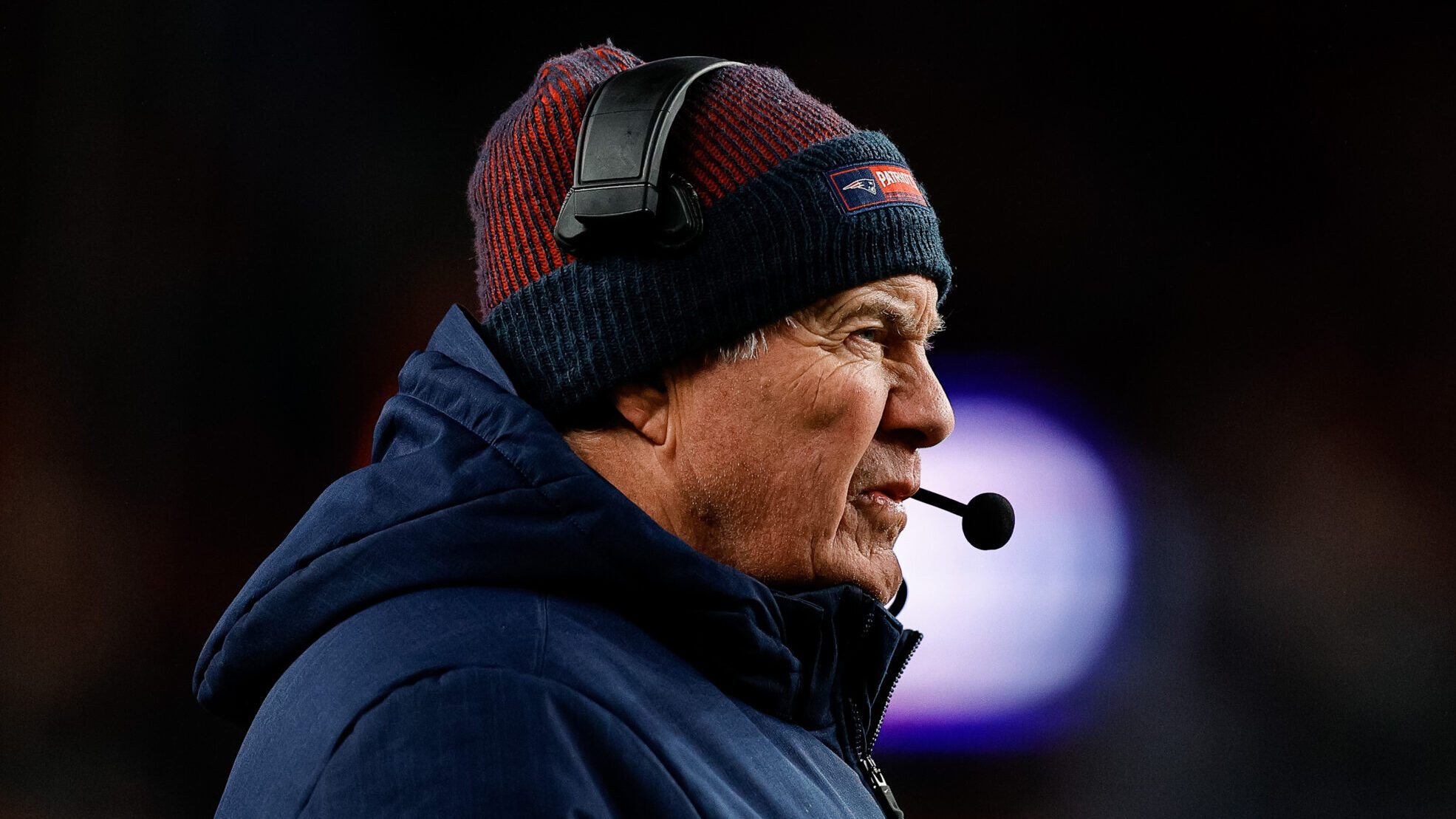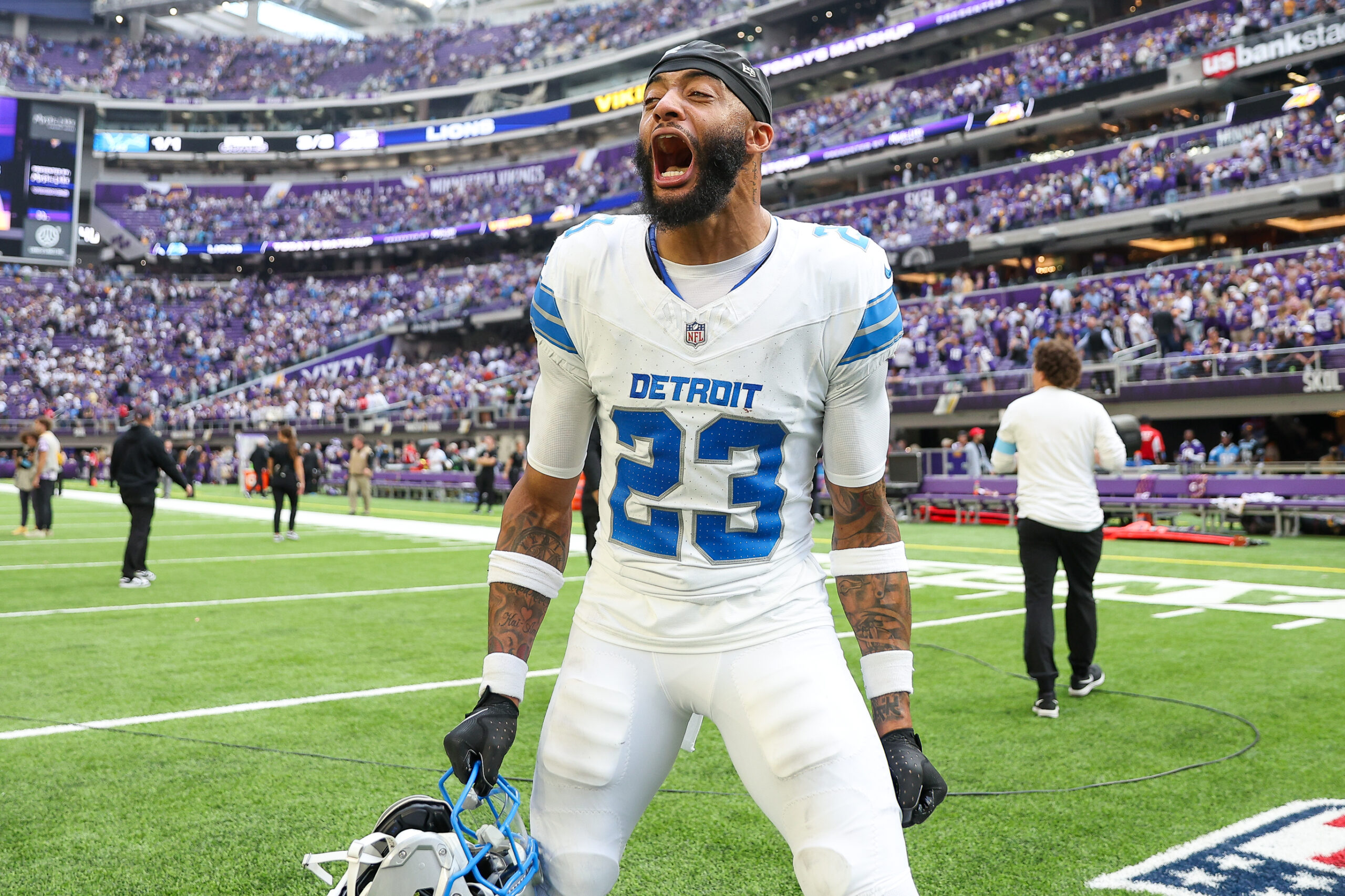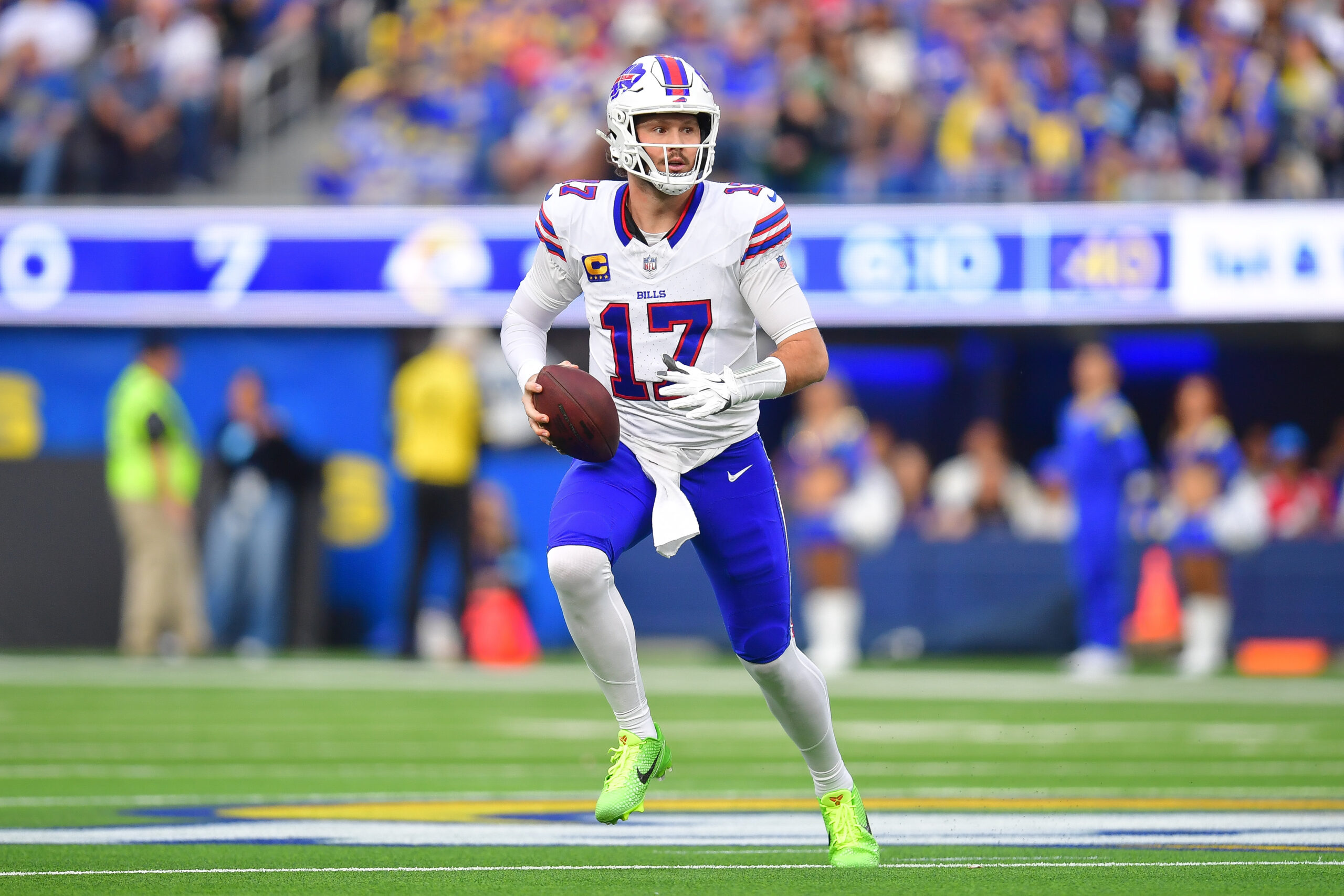Expert Analysis
12/12/24
10 min read
How The Detroit Lions Created A Defense Built To Last

The Detroit Lions are the best team in football. They’re first in DVOA by being the league’s most well-rounded team. Detroit is fourth in DVOA and EPA per play on offense. On defense, the Lions rank third in DVOA and second in EPA per play.
That defensive success stands out, not just because the offense tends to get most of the attention but also because so much has changed on that side of the ball throughout the season.
Last year, the Lions also started out this way. Detroit had a top-10 defense by EPA per play through the first six weeks of the season, per TruMedia. By the time they hit their Week 9 bye, the Lions still ranked 11th. However, with injuries plaguing the defense, the Lions were 28th in EPA per play on defense and last against the pass from Week 10 through the end of the regular season.
By the time the Lions got into the playoffs, they were giving significant playing time to players like Kindle Vildor, who was in coverage on the pass that bounced off his helmet and into the hands of Brandon Aiyuk against the San Francisco 49ers in the NFC Championship Game.
The Lions wanted to be a strong and aggressive man coverage team but couldn’t do that with the personnel available to them by the end of the season. During Detroit’s hot start to the year, the Lions were 16th in the rate of plays they used man coverage and fifth in EPA per play in man.
During the second half of the season, the Lions leaned harder into man coverage, ranking ninth in usage rate, while blitzing more and trying to create some chaos up front to make things harder on opposing offenses. But the Lions ranked last in EPA per play, by a significant margin, when playing man coverage from Week 10 on.
At the end of the season, the Lions didn’t have the players capable of playing the style they wanted, so they spent the offseason trying to prevent that from happening again. That mostly happened in the secondary. Detroit traded for Carlton Davis, drafted Terrion Arnold in the first round, and signed Amik Robertson to play the slot.
While the improvements in coverage were based on the idea of having enough depth at those spots in case there were more injuries; it turned out to be protection from the injuries suffered along the defensive front.
Surviving A Big Loss
Aidan Hutchinson suffered a broken tibia and fibula in Detroit’s Week 6 game against the Dallas Cowboys. To that point, Hutchinson had been the league’s most dominant pass rusher. Through Week 6, he accounted for 53.6 percent of the team’s pressures, which easily led the league.

Looking at that rate compared to other Lions really highlights how much Hutchinson was doing for the pass rush.

It wouldn’t have been surprising to see the Detroit defense struggle to find success after one of the league’s best pass rushers went down, given how big of a role he played in initial success. However, since Hutchinson's injury, the Lions have gotten better on defense.

"How We Play"
A lot of that has come down to how much the Lions have successfully leaned into man coverage, becoming the ideal Aaron Glenn defense. Through Week 6, the Lions played man on 34.4 percent of plays, which was the sixth-highest rate in the league, and they were also sixth in EPA per play when they did.
“It’s not what we play, it’s how we play. If I can go in with four or five calls, and they can play fast, and they can play physical, and they can play violent, that overcomes a lot of ‘scheme.’ You can have as much scheme as you want but players make the scheme. Actually, players make the style of play better than the scheme if they play the right way, and our guys do a great job of that.”
Lions DC Aaron Glenn
Since the Hutchinson injury, the Lions have played man on 46.2 percent of plays. That’s the highest rate in the league since Week 7, and they’re fourth in EPA per play.
It’s not just the man coverage; it’s how smoothly the Lions play it, with the responsibilities and communication going perfectly. In Week 14, the Packers used motion on nearly all of their offensive plays, but the Lions were able to stay with Green Bay receivers in man coverage.
Take this play on a third-and-6 near midfield in the first quarter. The Packers motion Jayden Reed from the outside, and slot corner Amik Robertson starts to go with the motion as Redd becomes the inside man.
But when Reed stops and motions back to the outside, he’s passed off to Carlton Davis and Robertson takes Dontavion Wicks from the slot. It’s a seamless pass off before the snap, and Robertson keeps close enough coverage for there to be a small window for a throw to Wicks down the field.
— Dan's Clips (@dansfilmclips) December 12, 2024
This type of defense can be risky when it doesn’t work, and there are opportunities for big plays down the field. Individually, Detroit’s top three cornerbacks don’t stand out in coverage metrics because there have been some big plays given up.
All three are about average in adjusted yards allowed per coverage snap, which adjusts for touchdowns and interceptions. But all three are below average in catch rate allowed, which does give cover for the more explosive plays.

When in man coverage, the Lions have the second-lowest completion rate allowed at 49.2 percent.
The success and trust in man coverage have allowed the Lions to play more aggressively upfront. Detroit has gone from blitzing on 28.3 percent of plays with Hutchinson healthy to 33.1 percent. The Lions are sixth in blitz rate and ninth in pressure rate since Week 7.
Detroit’s biggest shift in blitzing is how often it does it on early downs. Glenn has always used a high rate of blitzing and man coverage on third downs, but the Lions have gone from blitzing on a quarter of early down plays to 31 percent.
When the Lions do bring the blitz and play man coverage behind it on third down, they’re ninth in EPA per play and have allowed a 28 percent conversion rate since Week 7.
Here’s a blitz, combined with an early win right up the middle that forced a throwaway and a quarterback hit on Jordan Love.
— Dan's Clips (@dansfilmclips) December 12, 2024
The Week 14 game against Green Bay might be the Lions' most impressive game of the season, given how many injuries there were along the defensive line. Among Week 1 starters, only Alim McNeil was still in the lineup. Detroit still had a 37.5 percent pressure rate and had seven quarterback hits.
“It’s not the playbook that’s the most important thing for these guys to come in and learn,” Aaron Glenn said in a recent press conference about how the defense has dealt with the injuries and so many new players on the defense. “It’s the style of play that we have, and it’s easy to learn. Once you see it and once we show it to them, they understand.”
“It’s not what we play, it’s how we play. If I can go in with four or five calls, and they can play fast, and they can play physical, and they can play violent, that overcomes a lot of ‘scheme.’ You can have as much scheme as you want but players make the scheme. Actually, players make the style of play better than the scheme if they play the right way, and our guys do a great job of that.”
Of course, there is still some scheme involved. In addition to the aggressive man coverage and blitzing, the Lions have created a pass rush by using one of the highest rates of stunts in the league. Per MatchQuarters and FieldVision, the Lions are second in the league with a 23.1 percent stunt rate on pass plays, often using the defensive tackles to run the stunt.
The Lions have also gotten some great individual performances along the defensive line to create pressure. McNeil has been a threat in the middle and is 29th among all defenders in pressures since Week 7.
— Dan's Clips (@dansfilmclips) December 12, 2024
Za’Darius Smith was acquired at the trade deadline and has nearly been a Hitchinson replacement since he stepped on the field in Detroit. With the Lions, Smith has a 20.6 percent pressure rate and has accounted for 44.2 percent of the team’s pressures during the past four games.
Second-Year Impacts
Some of the other players on the defense make the shifting of defensive philosophy possible. Since Hutchinson went out, Brian Branch has played more safety and straight in the box and less in the slot.
That’s taken him away from the ball on some passing plays and limited the rate of individual splash plays he had during the first half of the season, but the move has helped secure the middle of the defense.

Jack Campbell has been used more as a blitzer during the second half of the season, remains one of the better chase-and-tackle linebackers in the league, and has improved in pass coverage. He’s ninth at the position in yards allowed per coverage snap. Among players with at least 80 tackles, he’s third in the rate of tackles that produced positive play of the defense (63.4 percent).
Players like Branch and Campbell have been more important to this defense during the second half of the season because the Lions have relied on more plays with four defensive backs on the field.
Branch has the ability to play everywhere on the defense to fill whichever hold is vacated in coverage, and Campbell has been just as versatile, now calling the plays with Alex Anzalone on injured reserve. These two second-year defenders have been huge for the spine of the defense.

A Super Bowl Test
With how fragile the defense was last season, the Lions made the effort to prevent that from happening again. Even though they were still shallow in depth along the defensive line and could have crumbled with the loss of the biggest impact player, this defense has not only survived but has thrived and improved over the course of the season.
That’s a testament to the players and the coaching staff, who have excelled in every aspect this season.
Detroit now gets its toughest test with the Buffalo Bills coming to town. The Bills are fifth in EPA per play against man coverage and have faced the second-most dropbacks against it, as defenses haven’t been scared of manning up Buffalo's receivers. The Lions are likely to do the same.
It will be strength-on-strength in a matchup between two teams that could meet again in the Super Bowl.
By this point last season, we were already starting to worry about whether the Detroit defense could hold up in the playoffs. Now, despite injuries to key pieces and plenty of depth, the Lions have continued to play as one of the best defenses in the league.
The fit between players, scheme, and attitude has been perfect — a long-awaited effort on this side of the ball. It’s likely to get Aaron Glenn a head coaching job this offseason, and it could be partly the reason for the Lions ending up in a place they didn’t know whether they would get back to after last season.







